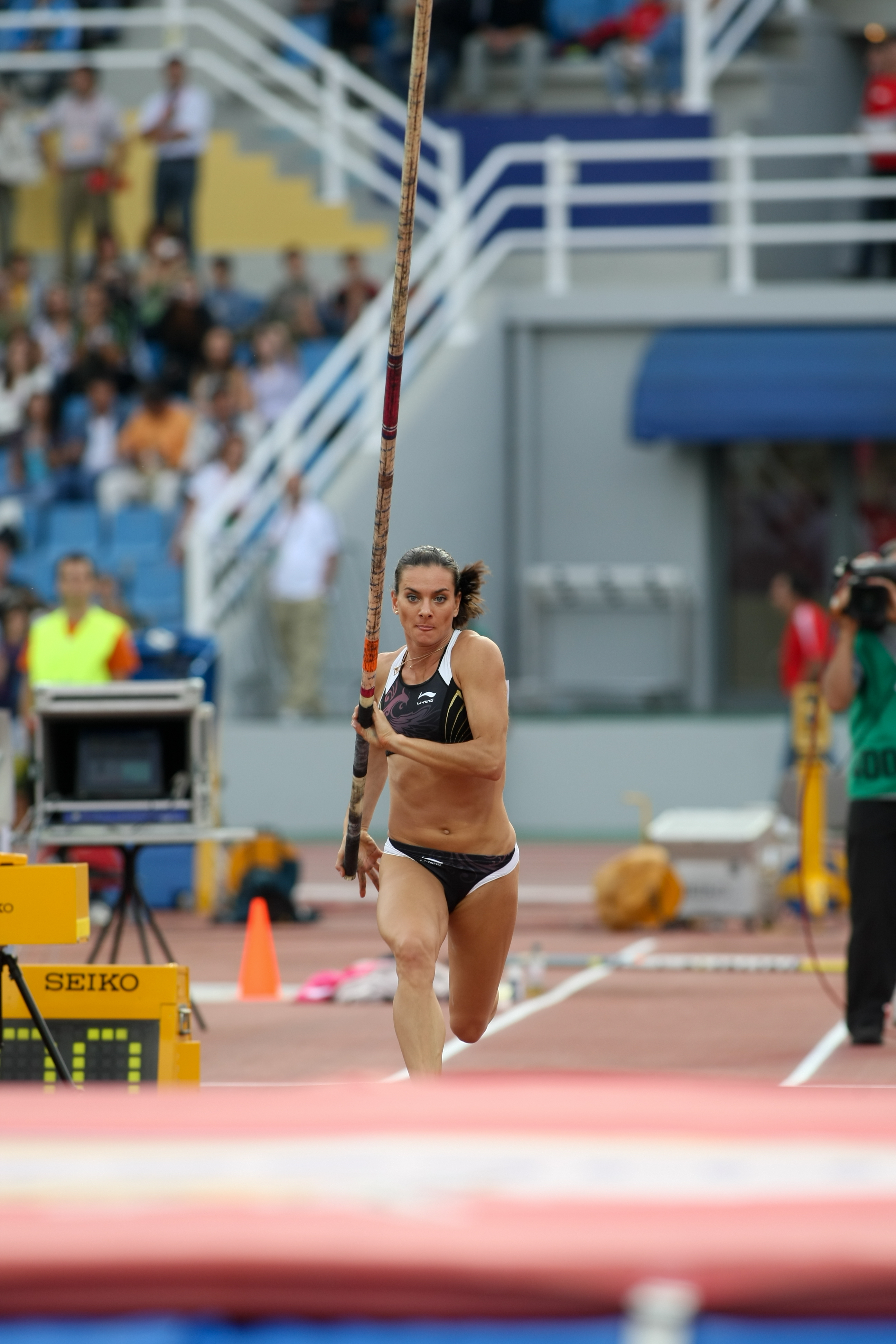Pole vault is a an event in track and field competition in which athletes use a pole to propel their body over a crossbar set at a certain height. The equipment needed for pole-vaulting includes the pole, a crossbar, and two upright standards to support the crossbar. The pole can be made of any material. However, all modern vaulters use poles made of fiberglass or carbon fiber. The pole is from 12 to 171/2 feet (3.7 to 5.3 meters) in length. The fundamentals of pole-vaulting include (1) the grip, (2) the run, (3) the plant and take-off, (4) the swing, (5) the pull-up, and (6) clearing the bar.

The grip
is important in pole-vaulting. The athlete must position the hands properly and place them at the ideal height on the pole. He or she places one hand 2 to 3 feet (61 to 91 centimeters) below the other hand, and holds the pole parallel to the ground.
The run
down the runway toward the crossbar is made almost at top speed, but the vaulter controls the run carefully. Markers along the runway allow the vaulter to gauge his or her stride and take-off position so that the take-off is from the same foot and at the same place in every vault. During the run, the vaulter keeps his or her eye fixed on the box that is set in the ground beneath the crossbar.
The plant and take-off.
The vaulter plants (places) the end of the pole in the box. As the speed obtained down the runway is transformed into upward motion, the pole bends. As it straightens, it helps propel the vaulter upward.
The swing and pull-up.
As the vaulter holds onto the rising pole and swings the body through the air, he or she pulls the knees up toward the chest and then shoots the feet up toward the bar. The swing and pull-up produce a handstand effect with the vaulter’s chest next to the crossbar.
Clearing the bar.
While the vaulter is in the handstand position, the feet start down on the other side of the crossbar. This position of the body is essential for maximum height. The vaulter then pushes the pole away so it will not hit the crossbar and knock it down. As the vaulter releases the pole, he or she turns the thumbs inward to help prevent the elbows from hitting the crossbar.
